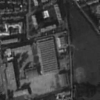Free Online Productivity Tools
i2Speak
i2Symbol
i2OCR
iTex2Img
iWeb2Print
iWeb2Shot
i2Type
iPdf2Split
iPdf2Merge
i2Bopomofo
i2Arabic
i2Style
i2Image
i2PDF
iLatex2Rtf
Sci2ools
103
click to vote
ICPR
2000
IEEE
2000
IEEE
Estimation of Adaptive Parameters for Satellite Image Deconvolution
The deconvolution of blurred and noisy satellite images is an ill-posed inverse problem, which can be regularized within a Bayesian context by using an a priori model of the reconstructed solution. Since real satellite data show spatially variant characteristics, we propose to use an inhomogeneous model. We use the Maximum Likelihood Estimator (MLE) to estimate its parameters. We demonstrate that the MLE computed on the corrupted image is not suitable for image deconvolution, because it is not robust to noise. Then we show that the estimation is correct only if it is made from the original image. As this image is unknown, we need to compute an approximation of sufficiently good quality to provide useful estimation results. Such an approximation is provided by a wavelet-based deconvolution algorithm. Thus, an hybrid method is first used to estimate the space-variant parameters from this image and second to compute the regularized solution. The obtained results on high resolution satell...
Computer Vision | ICPR 2000 | Image Deconvolution | Noisy Satellite Images | Wavelet-based Deconvolution Algorithm |
Related Content
| Added | 09 Nov 2009 |
| Updated | 09 Nov 2009 |
| Type | Conference |
| Year | 2000 |
| Where | ICPR |
| Authors | André Jalobeanu, Josiane Zerubia, Laure Blanc-Féraud |
Comments (0)

